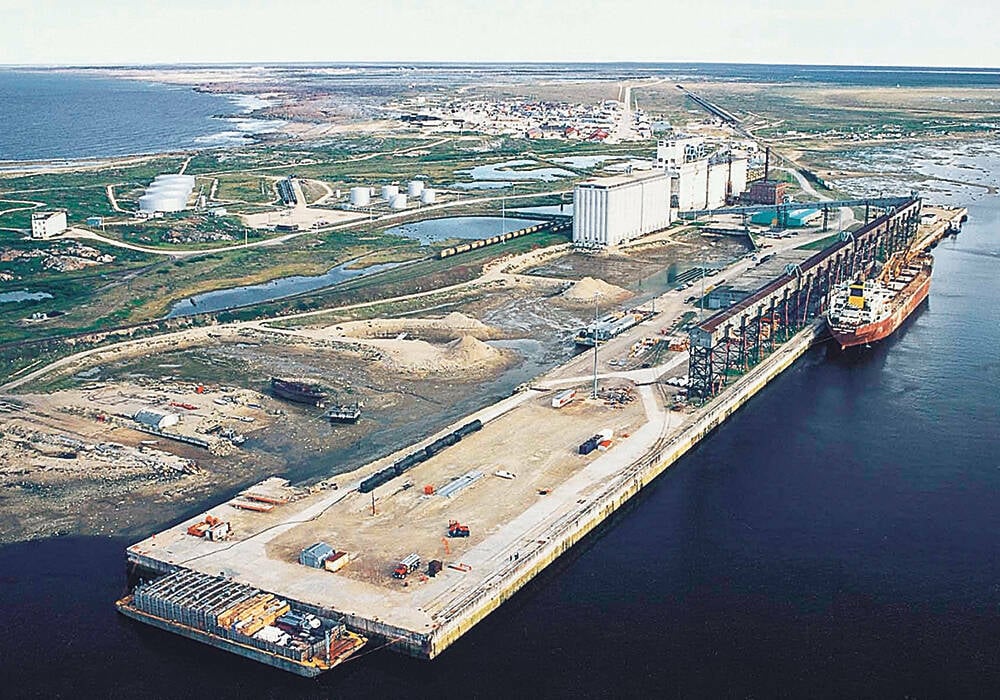It’s hard to find a silver lining when Canada’s relationship with our largest trading partner is threatening to implode.
If you had to though, there’s something to mention about national unity. Much has already been said about the trade wars sparked by U.S. President Donald Trump, his “51st state” rhetoric, and Canada’s corresponding ‘elbow’s up’ boycott of American products and travel.
If the goal was to raise Canadians’ collective hackles, from Western farmers to urbanites in downtown Toronto, the last six months have been a masterclass.
Read Also

Port of Churchill revamp gathers pace
Canada’s Port of Churchill Plus update plan hopes to expand trade, including agriculture trade, at Manitoba’s Arctic sea port
Without dismissing the very real grievances around things like green policy, the surge of national pride has seen many groups who previously had little use for each other standing side by side to face down the external economic and national sovereignty threat.
That same dynamic played out earlier this month in the Manitoba legislature.
On June 2, the province announced that Bill 47, the Fair Trade in Canada (Internal Trade Mutual Recognition) Act, had received royal assent, along with a change that would set out June 1 as Buy Manitoba, Buy Canadian Day every year.
Rather than the status quo, where goods from one province might hit a wall at the border because the language of that province’s regulations don’t mesh perfectly with their neighbour’s, the bill proposed setting up “reciprocating jurisdictions.” These would be provinces or territories that also had reciprocal legislation promising that they play nice on provincial trade.
It would then be recognized that goods and services from those regions had met standards on par with Manitoba’s own — allowing trade without the months or years it would take to dismantle and harmonize each province’s convoluted set of regulatory rules.
Unsurprisingly, agriculture groups celebrated the bill. Those kinds of rubber-stamping hurdles have been a particular irritant for sectors like livestock and direct marketers. Producers, for example, have had to get animals processed at a federally inspected abattoir (thin on the ground in Manitoba) if they wanted to sell meat into another province.
There’s also the matter of agriculture’s labour shortage, and the hopes that measures to improve interprovincial trade will also make it easier for workers to move.
All said, from introduction in the chamber to royal assent, Bill 47 was on the table for less than two weeks. That is astoundingly fast, as politics goes. Just look at bills like the federal Bill C-234, which would have introduced certain carbon pricing exemptions for farmers. It had initially enjoyed multi-party support, but later became the point of a political firestorm that dragged on for months in the Senate.
In this case, for once, both sides of the aisle were on the same page and things got done. Manitoba’s business, mining, trade and job creation minister, Jamie Moses — who introduced Bill 47 — pointed to the “rare, but welcome, show of unity for Manitoba’s economic future.”
It shouldn’t have been a stretch to get Manitoba’s Progressive Conservatives to back Bill 47. Interprovincial trade has been an action item for them, from the New West Partnership Trade Agreement to then-agriculture minister Blaine Pedersen blasting aforementioned provincial meat trade rules in 2020 when the pandemic had backed livestock up at the farm gate.
Nationwide though, you’ve also seen a surge of different governments and political parties prioritizing co-operation and determination to break down interprovincial trade barriers once and for all. Ottawa has set a goal of free trade across Canada by July 1, and the rash of memorandums of understanding and legislation like Bill 47 show that the provinces are taking that goal seriously.
It’s perhaps the shiniest silver lining on the dark trade cloud hovering over Canada’s economic future.
The increasingly volatile global trade landscape has finally been forced Canada to address problems that have lingered for decades.
The focused, multi-province legislative work we’re seeing now will likely pay economic dividends long after the second Trump era.














